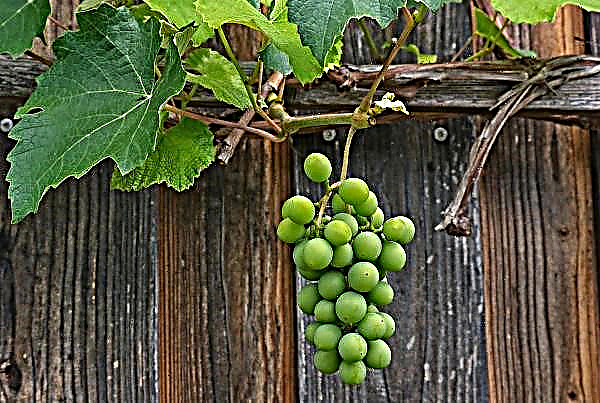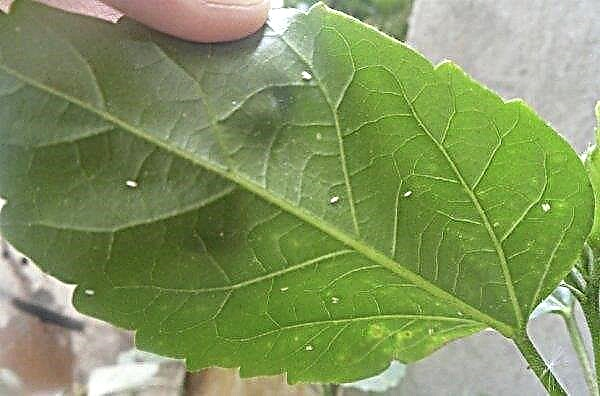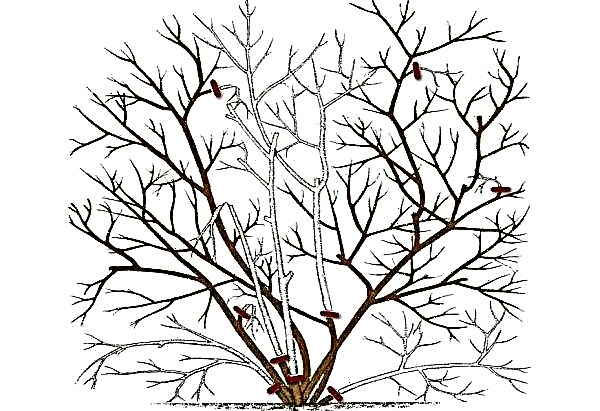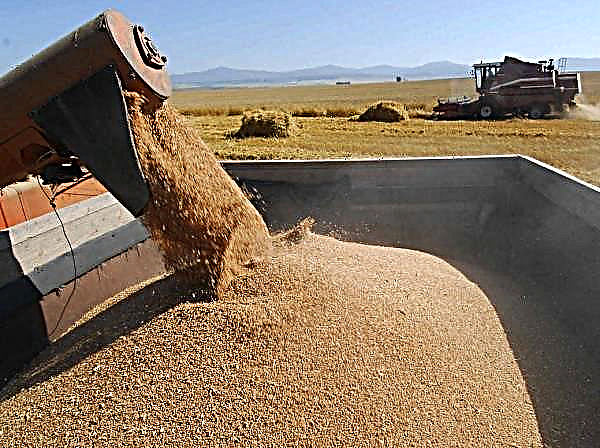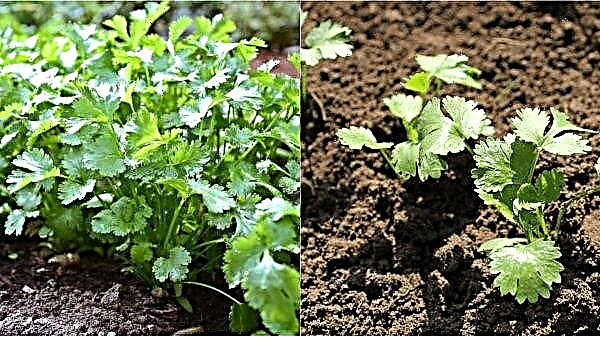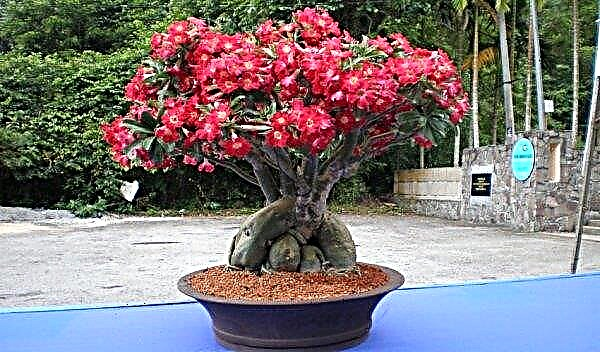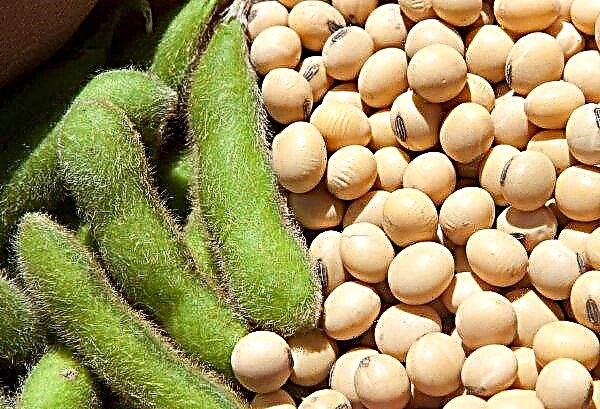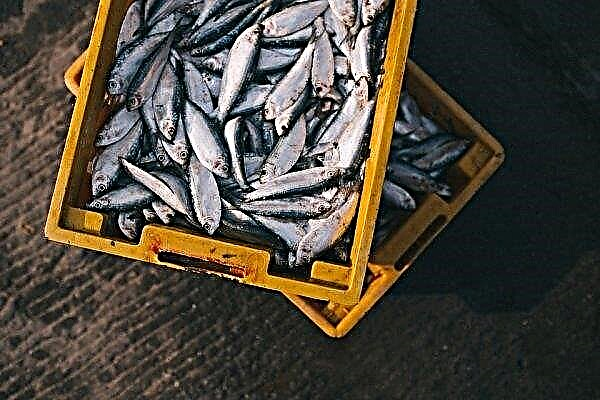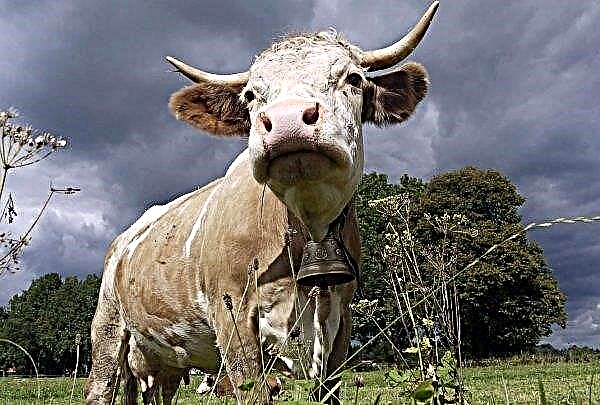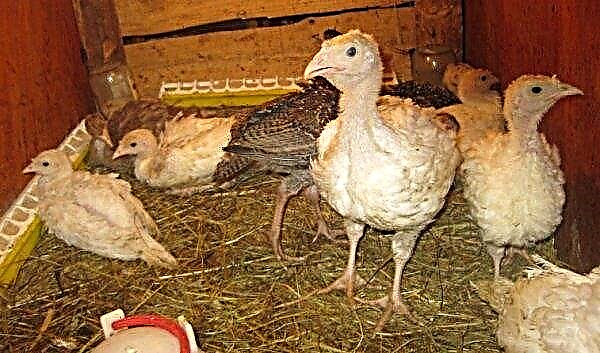In recent years, in addition to such traditional cultures as potatoes, aromatic lentils have been actively used by many housewives. This plant was able to supplement many dishes and become a valuable food product that can saturate the body with a plentiful portion of protein. The article discusses in detail the main features of the culture, and also describes what is needed for its successful cultivation at home, with a detailed description and photo.
The origin and description of the culture
Lentils have been known to man for many centuries, despite this, the plant was especially popular in the east, where it is used as one of the main food crops. In the rest of the planet, a real boom and fashion for all kinds of dishes from the plant were formed only in the twentieth century. Today this species is used as a high-yielding and universal crop, which is used for food and feed purposes.
Western Asia and the warm climatic regions of Southern Europe are considered to be the homeland of lentils. To this day, wild forms of plants are found on this territory, but most of the existing species today are the result of prolonged cultivation and selection of wild hybrids. Externally, this plant is one of the varieties of peas and other crops of the leguminous type, from the legume family, therefore it can often be compared with soy or beans by the appearance of the bush and the taste characteristics of the crop.
 In the flowering phase, the bushes are covered with small flowers with a length of not more than 7 mm. They are collected in small brushes of 2–4 pieces.
In the flowering phase, the bushes are covered with small flowers with a length of not more than 7 mm. They are collected in small brushes of 2–4 pieces.
By itself, this species appears to gardeners as a short annual bush with a height of 15 to 80 cm. The stem is an upright type, strongly branched, with a large number of leaves. The leaves are located on short petioles and are distinguished by an oval or elliptical shape, with a slight sharpening on the edge. Their color is mostly saturated, green.
Did you know? Lentils is considered one of the oldest foods, introduced into its culture in the Neolithic era (about 9 thousand years ago).
The color of the petals can be varied, but shades of white, pink or purple tones often prevail. Flowering depending on the growing region and climatic conditions is observed only a few weeks and falls on the period from early June to late July.
After flowering, rhombic bean fruits appear on the bush, with an average length of about 1 cm each. Harvest ripens in small elongated and flattened pods, with a pointed edge. About 3 seeds are formed in each of them, changing color and density during the growing season.
 Each bean is rich in high content of protein readily available for digestion, the amount of which on average is 20% of the total mass.
Each bean is rich in high content of protein readily available for digestion, the amount of which on average is 20% of the total mass.
How lentils grow in nature
Wild-growing forms of lentils are practically no different from cultivated ones, however, they still have their own nuances. First of all, such plants are lower, the average bush height in the wild does not exceed 30 cm. The crown is also compact, it is less spreading and thick, with small leaves.
Such species belong to the so-called determined group of plants, which are characterized by prolonged flowering. Under optimal conditions, this negatively affects the formation of beans, as the ovary appears only as a result of negative environmental factors (drought, cold snap, etc.). Harvest of wild lentils is absolutely suitable for consumption, but it has less protein, and the grains themselves are smaller. In addition, such beans differ in a fairly dense and thick peel, so to soften it, the crop must be subjected to complex heat treatment.
Harvest of wild lentils is absolutely suitable for consumption, but it has less protein, and the grains themselves are smaller. In addition, such beans differ in a fairly dense and thick peel, so to soften it, the crop must be subjected to complex heat treatment.
The best varieties for growing
Most experienced gardeners and professional agronomists know dozens of all kinds of lentil hybrids that can produce excellent crops in different climatic conditions. However, it is often difficult for beginners, as well as many experienced plant growers, to choose the best variety of culture. In this case, you can opt for universal varieties, characterized by excellent yield and unpretentiousness.
The most perfect and popular among them are:
How to grow lentils in the country, garden
Lentils are the most unpretentious bean plant, so its cultivation in the country in most cases ends with success. But in order to achieve a really good homemade crop and high-quality beans, sowing, growing and caring for the crop should be carried out according to certain rules. Only this is the main condition for the return on labor spent on sowing seeds.

Selection and preparation of a landing site
This culture loves the abundance of free space, so its cultivation is carried out in an open and well-lit place. The southern side of the plot, located at a distance of at least 3-5 m from any tall vegetation and all kinds of garden buildings, is best suited for this. At the same time, the species cannot grow on a draft, so it is best to sow the culture in a place protected from this.
The plant loves well-fertilized and light soil., therefore, sandy and loamy soil with an elevated agricultural background is considered an ideal substrate for it. The next feature that you should also pay attention to is the previous culture. Despite the fact that legumes can develop well and bear fruit after almost any plant, the best harvest is observed when grown after a predecessor such as corn, potatoes and all kinds of winter crops.
Important! At the same place, lentils are grown every 4 years, but it is best if this interval is 5–6 years.
The preparation of the landing site includes standard agricultural practices for growing fruit plants. Allotted in the garden, the area must be cleaned of the remains of vegetation, weeds and other pollutants, and then carefully leveled. If the territory of future beds is located in a lowland, it is necessary to create a small hill on the site, otherwise the plants will be susceptible to high humidity and all kinds of fungal diseases.

How to grow from seed
Seed propagation is the traditional and easiest way to grow crops. But for this, when sowing, you need to observe some important rules. They provide for the pre-preparation of seed, as well as compliance with all kinds of conditions for the general technology of sowing legumes.
Do I need to soak before sowing
There are several ways for vegetable growers to activate seeds before sowing, one of which is traditionally soak. This procedure is optional, but it at times increases the germination of seeds, as well as the activity of their growth. It is carried out about a day before sowing, the grains are placed in clean and settled water and kept at room temperature for about 24 hours. To increase the efficiency of soaking in water, the Epin growth stimulator should be added at the rate of 2 drops / 100 ml.

Pickling
If possible, beans should be treated with special protective equipment. Dressing is also not a mandatory measure, but without this, a pest or a dangerous infection may appear in the crop area. For this, immediately before sowing, the grains are sprayed with “Rancona”, “Vitavax”, “Vincit”, “Kinto-duo” or any other interchangeable analogue.
When to sow in open ground
The plant is able to germinate at a temperature of already + 5 ° C, however, the soil should be completely warmed up and the necessary temperature regime established. Depending on the climatic features of the growing region, the optimal period for this in the temperate climate zone is observed from the beginning to the end of April.
Sowing culture
In order to grow a crop without any problems, the basic rules of agricultural technology for sowing should be strictly observed. Beans are sown in a row method to a depth of about 4–5 cm. Grains are not sown closely, leaving at least 3 cm between each of them.
The row spacing should be chosen so that the number of plants in 1 m² reaches 150 pieces (23 plants per 1 linear meter of row), therefore, it can fluctuate within 15–25 cm. A wide-row method is also suitable for sowing, with row spacing of about 45 cm. Moreover, in order to achieve the required yield, the seeding rate is increased by no less than twenty%.

Soil preparation
The traditional cultivation system of any fruit and ornamental culture provides for special preparation of the site, and in the case of lentils this is no exception. 14 days before sowing, the soil must be dug to a depth of at least 30 cm. Before the procedure, fertilizer must also be added to the soil. For this, 4–5 kg of manure should be given per 1 m², as well as 40 g each of superphosphate and potassium nitrate.
Important! If you want to achieve maximum yield of lentils, fertilizers should be applied 2 times — in spring and autumn (in the first half of November).
The culture does not tolerate acidic soil; therefore, if necessary, 1-3 kg of slaked lime should be added to the soil along with fertilizers. Besides, if the soil on the site is excessively dense, it must be lightened. For this purpose, from 1 to 3 buckets of river sand per m² are added to the site, after which the place under the beds is again carefully plowed.

Lighting and temperature
All representatives of legumes are considered photophilous plants, while the intensity of lighting plays a crucial role not only in growth, but also in yield. In the event of a lack of lighting, the productivity of the beds can be halved, and the quality of such grains will not allow it to be used for further processing. The temperature is unpretentious culture. In the natural environment, grain is able to sprout even at +5 ... + 10 ° С, however, for a healthy growth and fruiting, lentils need an average daily temperature of about +18 ... + 20 ° С.
Air humidity
High air humidity is not a limiting factor for good fruiting of lentils, however, excessively dry air can be detrimental to plants. It is best if the humidity at the seeding site is within 40-60%. In the case of excellent ventilation of the beds, the crop is able to tolerate humidity up to 80%.

Watering, top dressing, cultivation
One of the main advantages of lentils is drought tolerance, but a lack of moisture almost always inhibits the productivity of the beds. To avoid this, an intensive irrigation system is created on the site. The first 2 months the soil is moistened once every 2 days, after the plants get stronger and turn into a densely branched bush, the irrigation frequency is halved, up to 2-3 procedures per week. Watering the beds abundantly, while water is introduced in such a way that the soil is moistened to a depth of 30-40 cm.

Following watering, the site should be provided with high-quality top dressing. About 14 days after germination, the plants need to be fed with any nitrogenous fertilizer with a calculation of 35–45 g of pure nitrogen per m². The next time the beds are fed before flowering, using phosphorus and potassium compounds. On poor soils, they give 40 g of superphosphate and potassium nitrate per m² area; on well-fertilized soils, they reduce the rate to 10-12 g.
In addition to the above compounds, the culture is also fed with sulfur, which is needed in fairly high concentrations. Its deficiency is compensated by solutions of ammonium sulfate, which is added at a rate of 9–11 kg of pure sulfur / m² of soil.
Important! Lentils are not able to absorb sparingly soluble fertilizers, so the makeup is carefully dissolved in water and applied in liquid form.
Since the plant is characterized by a rather slow increase in green mass, in the first 3-4 weeks the beds need intensive cultivation to protect young seedlings from the negative effects of weeds. Perform the procedure at least 2 times a week. After the bushes are fully formed, loosen the beds as necessary, after the appearance of weeds.

Germination, flowering and fruit formation
Regardless of the variety, the development of lentils occurs in a special way. Germination of grains occurs in the thickness of the soil, after which the first two underground nodes are formed. Of these, a young aerial shoot is later formed, which becomes the basis of the entire bush. As the seedlings grow, they form a third node, at the level of which the first pair of leaves grows. Under favorable conditions, every 5-7 cm, the next node appears with a pair of leaves.
At about 12 knots, the bush begins to throw out inflorescences, and on the 40-50th day after planting, full-bloom of plants is observed. Lentils are an indeterminate species capable of self-pollination, however, the presence of a small apiary in the area successfully affects the productivity of crops. Pollination by insects stimulates an increase in the mass of grains, and also contributes to a high percentage of protein in the dry mass of the crop.
Flowering of the bushes is observed until the plants undergo all kinds of stresses (cooling, heat, drought), after which there is an active fruit setting. They are formed on the secondary shoots of the lateral processes and, as they ripen, increase in growth, become dense and weighty, with an average mass of 1,000 seeds about 50 g.

Pest and Disease Control
Lentils are affected quite often by a disease or a dangerous pest. Despite the increased resistance of most varieties to such lesions, gardeners are not able to create ideal conditions for plants, due to which the necessary immunity develops. Therefore, in modern crop production without special protective equipment can not do.
Among pests, most often in crops can be found caryopsis, moths and scoop. To eliminate them, any contact insecticide is used (Phobos, Hermes, Vantex, etc.). Of the various infections, lentils are readily affected by the causative agent of fusariosis, ascochitosis and rust. Eliminate these fungal infections with the help of "Spectrum", "Olympus" preparations or other interchangeable analogues.

Such plantings are treated periodically, throughout the entire growing season. The first is carried out approximately on the 14–20th day after emergence. The latter is performed no later than 20–25 days before harvesting. Plants are sprayed only in dry, low-wind and cloudy weather, in the early morning or late evening.
Harvesting
Harvesting is carried out in several passes. Young pods are first selected for use in boiled or raw form. To do this, the beans must reach the phase of milk ripeness. This crop is harvested by hand, after which it is consumed immediately or subjected to deep freezing.
Did you know? Lentils was one of the most popular products of Ancient Russia. Already in the XIY century, it became the basis for porridge, first courses, and was also used for making bread.
Mature beans are removed along with the bush, cutting the plant according to soil level. Do it manually or using all kinds of technical devices. Since mature pods open even with the slightest damage, do lentils in the early morning dew. At this time, moisture softens the peel peel to the maximum, so using this condition makes it possible to avoid the loss of a significant part of the crop.
 Harvesting fully ripened fruits begins after about 1/3 of the crop remains immature, and the remaining mass of pods has acquired a characteristic brown tint
Harvesting fully ripened fruits begins after about 1/3 of the crop remains immature, and the remaining mass of pods has acquired a characteristic brown tint
Lentil Seed Processing
As soon as the last pod from the beds is collected, you must definitely think about the timely processing of the crop. First of all, the pods need to be dried beforehand, due to which it is possible not only to easily remove their peel, but also to achieve excellent crop retention. After this, the pods should be peeled. For this, the dried crop must be placed in a peeling machine or manually separated from the pods.
After that, you can start processing grains. The grower can choose to finely or coarsely chop them. The latter makes it possible to obtain the so-called lentil groats, more thorough grinding contributes to the production of lentil flour. In other cases, the crop is preserved in its original form and sent for some processing as necessary.

Benefits, Nutritional Value
Lentil cultivation today is considered one of the most important sectors of modern agriculture. This food product is important and extremely beneficial to human health. In addition to an increased protein concentration, it contains at least 40% carbohydrates and 11% dietary fiber from the total mass. This contributes to increased nutrition and calorie content of about 300 kcal / 100 g of product.
Vitamins PP, K and group B are distinguished from vitamins in grains with increased concentration. Among the minerals in the composition of the crop, you can find silicon, magnesium, phosphorus, ferum, cobalt, manganese, cuprum, molybdenum, selenium, chromium and zinc.

- Such a complex of important compounds not only provides excellent crop quality, but also gives lentils a special set of important qualities:
- lentil porridge safely affects the work of the heart and the cardiovascular system, the trace elements contained in it stimulate and strengthen the heart, make it more resilient;
- the product is able to reduce blood sugar, which is important not only to improve the health status of diabetes, but also to protect against a complex ailment;
- such beans have an enveloping and healing property that best protects the digestive system from gastritis, ulcers and other pathologies;
- periodic use of lentils helps to saturate the body with anti-cancer structures that protect organs and tissues against oncological formations.
Lentils are one of the most valuable daily table foods. It contains many healthy substances that can satisfy hunger, as well as saturate the body with substances important for maintaining health. In addition, the culture is so unpretentious and easy to process that almost everyone, even a beginner grower, can cultivate it.

